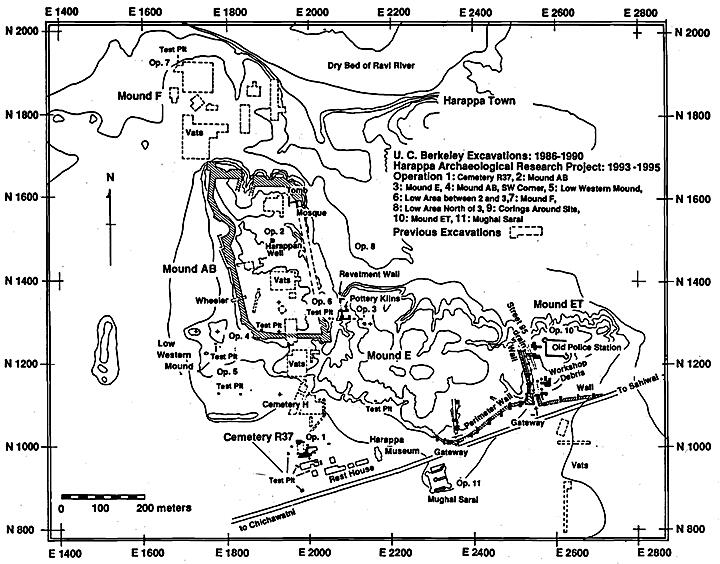Harappa Site Plan
Until quite recently, the common view of the Indus Civilization has been as a phenomenon largely undifferentiated in space and time over more than 500,000 sq km and the 500 to 700 years of its existence (2600/2500-2000/1900 B.C.). With continuing archaeological work throughout northwestern South Asia, however, the received wisdom particularly of spatial uniformity has been increasingly and successfully challenged (a notable early example being Fentress, 1976). The "typical Harappan" complex of material traits - including script on intaglio seals and other durable media, a system of standardized weights, measures, and proportions, bleached carnelian and other characteristic kinds of beads and ornaments of various materials, particular forms of and decorations on pottery, water works of varying degrees of sophistication, and a measure of architectural uniformity - can now be seen as something of a veneer of varying thickness overlying diverse local and regional cultural expressions of agricultural and pastoral life that had developed throughdut the region in previous millennia.

